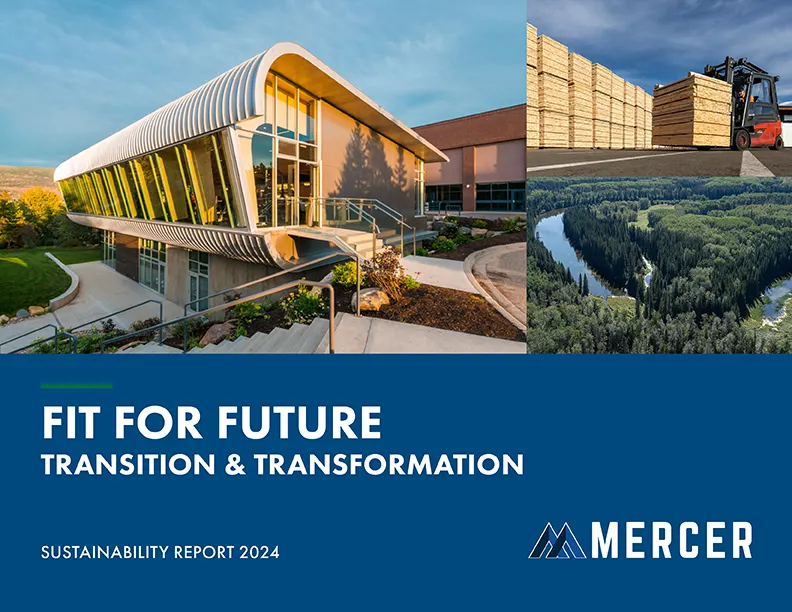Water Management
GOAL
At Mercer, we recognize the fundamental importance of responsible water stewardship across our operations. Our pulp mills are our most water-intensive operations. 100% of the water used in the kraft pulping process is withdrawn as surface water from rivers near our operations. All our pulp mills’ environmental management systems are aligned with the ISO 14001 standard, providing a comprehensive framework to reduce water use and continuously improve the quality of our water discharges.
We strive to minimize the impact of our operations on water availability and quality. Our mills actively pursue opportunities to enhance water efficiency and increase water reuse and recycling, supported by various research and development initiatives.
WATER WITHDRAWAL
Our process water withdrawal per tonne of pulp has been relatively stable over the past six years. The 5% increase in water withdrawal intensity in 2024 compared to 2023 was primarily due to lower total pulp production as a result of unplanned downtime events. Included in our withdrawal metric is process and cooling water sourced from freshwater rivers at all our pulp mills. Non-contact cooling water is necessary to ensure safe and efficient power generation from the condensing turbines at the pulp mills. Although availability of water is critical to our operations, water consumption is low in relation to the volume of water withdrawn. Of all the water withdrawn from the environment, approximately 91% was returned back to nearby rivers as surface water after use in 2024.





